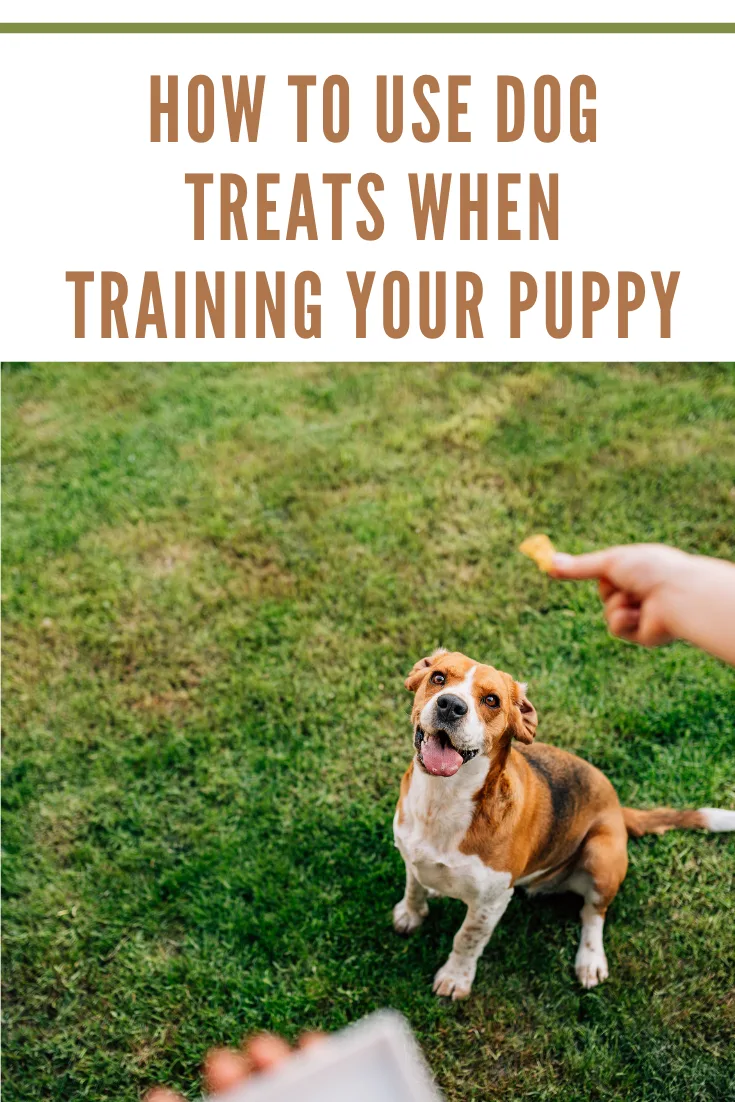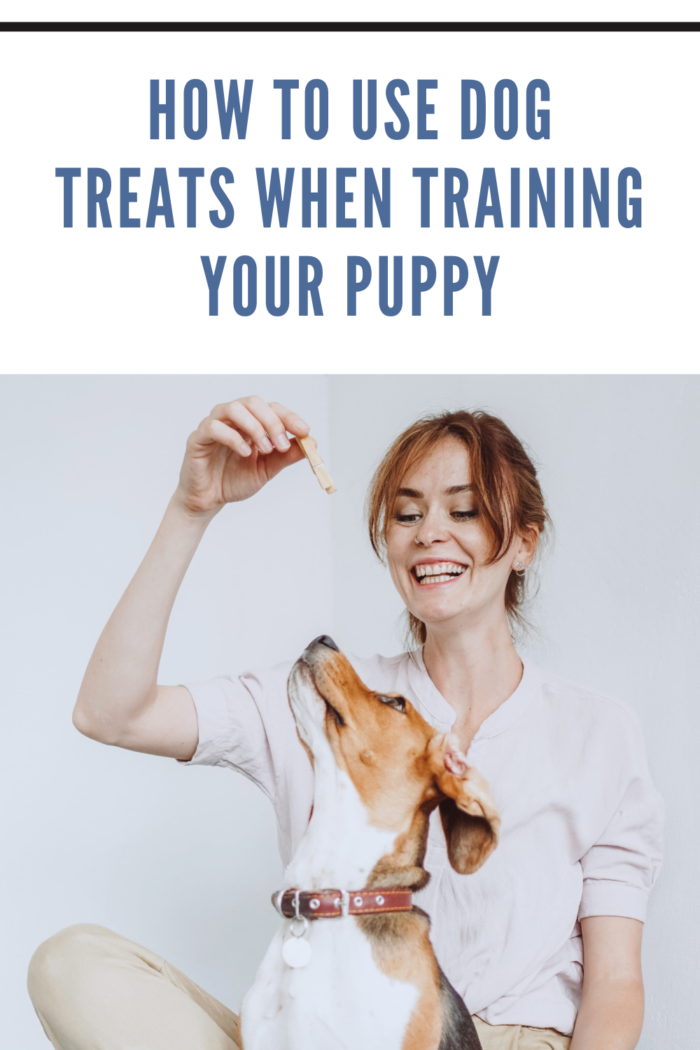How to Use Dog Treats Effectively for Puppy Training
Using dog treats when training your puppy is an excellent way to reinforce positive behavior and teach them new commands. By following these steps, you can make treat training a fun and successful experience. (we recommend this easy Peanut Butter Applesauce dog treat recipe)
Step 1: Choose the Right Treats Select small, soft, and easily digestible treats that your puppy enjoys. Avoid treats that are too large or hard, as they may pose a choking hazard and can be difficult for your puppy to consume quickly.
Step 2: Start with Basic Commands Begin with simple commands like “sit,” “stay,” and “come.” Use a treat to guide your puppy into the desired position and then give the corresponding command. As soon as your puppy responds correctly, reward them with a treat and lavish them with praise.
Step 3: Use Positive Reinforcement Use treats as positive reinforcement for good behavior. Whenever your puppy obeys a command, immediately reward them with a treat and offer verbal praise. This positive reinforcement helps your puppy understand that they are doing the right thing and encourages them to continue displaying the desired behavior.
Step 4: Be Consistent Consistency is key in puppy training. Use treats consistently to reward positive behavior, reinforcing the idea that good behavior leads to positive outcomes. This consistent approach helps your puppy grasp the connection between their actions and the rewards they receive.
Step 5: Gradually Reduce Treat Usage As your puppy becomes more proficient in responding to commands, gradually decrease the reliance on treats. Start substituting treats with verbal praise, physical affection, and occasional treats to maintain their motivation. This transition helps your puppy understand that good behavior is expected even without a treat every time.
Remember, training takes patience and consistency. While treats are a useful tool for training, they should not be the sole motivator. As your puppy learns and grows, shift the focus to verbal praise and affection as the primary rewards, ensuring a well-rounded and balanced approach to training.
Why Use Treats in Training?
Dogs don’t understand our language, but they are eager to please and respond well to positive reinforcement. Using treats as rewards during training helps communicate to your puppy what is expected of them and motivates them to obey commands. Positive reinforcement, such as using treats, builds a strong foundation for successful training sessions by reinforcing desirable behavior.
Choosing the Right Treats
Finding treats that motivate your puppy is key to successful training. Homemade apple peanut butter dog treats can be a wonderful option, but different dogs have different preferences. Some may respond best to “high value” treats like liver-based treats, while others may be just as motivated by their regular kibble.
Consider the texture of the treat as well. Some puppies prefer softer treats, while others enjoy the crunch of a biscuit. Experiment with different options to find what your puppy finds most enticing.
Remember, you don’t have to provide large quantities of treats during training. Start with small pieces and adjust the treat’s value based on your puppy’s motivation level. In some cases, small pieces of chicken, hot dog, cheese, or even vegetables can elicit better responses.
Enjoy the process of training your puppy using treats as positive reinforcement. It’s a rewarding journey that strengthens the bond between you and your furry friend while teaching them valuable skills that will last a lifetime.

Training Basic Commands: Sit, Stay, Come
Sit
The very first basic command most dog parents tackle is teaching their furry friend to sit. This command is essential for promoting calmness and focus in your dog.
Here’s a step-by-step guide to training your puppy to sit:
- Get your dog’s attention by showing them a treat.
- Hold the treat above their nose, making sure it’s not too high to cause jumping, and give the command “sit.”
- Slowly move the treat back behind your dog’s head. Most dogs will instinctively sit as their nose follows the treat.
- The moment your dog’s rear touches the ground, reward them with the treat and lavish them with enthusiastic praise.
Stay
Teaching your puppy to stay is crucial for their safety and the comfort of others around them.
Follow these steps to train your dog to stay:
- Begin with your dog in the sitting position. Reward them with a treat for sitting.
- With your dog’s attention focused on you, place your hand in front of them and say, “Stay.”
- Reward your dog again.
- Slowly rock away from your pup while continuing to hold your hand up and command “stay.”
- Give another treat as long as your dog remains in the sitting position. Gradually increase the distance as you repeat the process.
- If your dog loses focus and stands up or approaches you, start over by returning them to the sitting position.
Come
Teaching your dog to come when called is not only useful for safety but also helpful for getting them to follow you to specific locations.
Here’s how to train your dog to come:
- Starting from a sitting position can help gain your dog’s attention, but it’s not necessary.
- Excitedly call your dog’s name followed by the command “come,” as you move away from them.
- As soon as your dog obeys and comes to you, reward them with a treat.
Remember, training takes time, patience, and consistency. Practice these commands in different environments to reinforce your dog’s understanding. With persistence and positive reinforcement, your dog will become a pro at sitting, staying, and coming when called. Enjoy the process of training and strengthening the bond with your furry companion.

Continual Practice for Successful Training
Once you have introduced your puppy to basic commands such as sit, stay, and come, it’s important to continue practicing these skills to reinforce the desired behavior.
Here are some essential tips to keep in mind as you work on training your furry friend:
- Repetition is Key: Just like with any new skill, repetition plays a vital role in solidifying your dog’s understanding of the commands. Practice the commands regularly, ideally on a daily basis, to ensure that your puppy retains the learned behaviors.
- Positive Reinforcement: Positive reinforcement remains an effective training technique. Continue to reward your puppy with treats, praise, and affection when they respond correctly to the commands. This positive reinforcement strengthens the association between the command and the desired behavior, making it more likely for your dog to repeat the actions.
- Consistency is Essential: Consistency in training is crucial. Use the same verbal cues and hand signals for each command consistently, as this helps your puppy understand and respond appropriately. Consistency also extends to the timing of rewards and the criteria for success, ensuring clear expectations for your dog.
- Gradual Increase in Difficulty: Once your puppy masters the commands in a familiar and distraction-free environment, gradually increase the difficulty level. Introduce mild distractions, such as toys or low-level noises, to test their focus. You can also change the training location to more challenging environments, like the outdoors, where there may be more distractions. This helps your dog generalize their understanding of the commands and respond reliably in various situations.
- Daily Training Sessions: Dedicate regular daily training sessions to continue building upon the foundational skills. Short, focused sessions of 10-15 minutes are typically more effective than longer sessions. This allows for better concentration and engagement from your puppy.
- Set Realistic Expectations: Remember that each dog learns at their own pace. Be patient and understanding during the training process. Some days may show more progress than others, but consistent effort and positive reinforcement will yield results over time.
By investing time and effort in training your puppy early on, you are setting them up for success as they grow into a well-behaved adult dog. The strong foundation you build through training will not only enhance their behavior but also foster a deeper bond between you and your furry companion.
Enjoy the journey of training your puppy and celebrate every small achievement along the way. Embrace the opportunity to learn together and watch as your dog blossoms into a wonderful, obedient, and happy member of your family.
